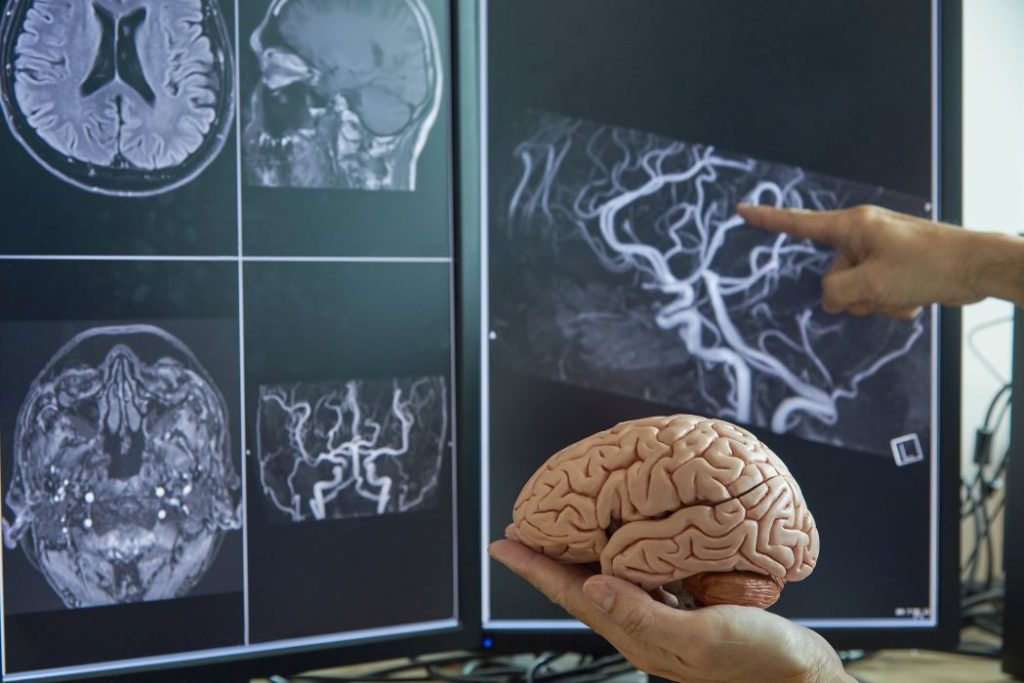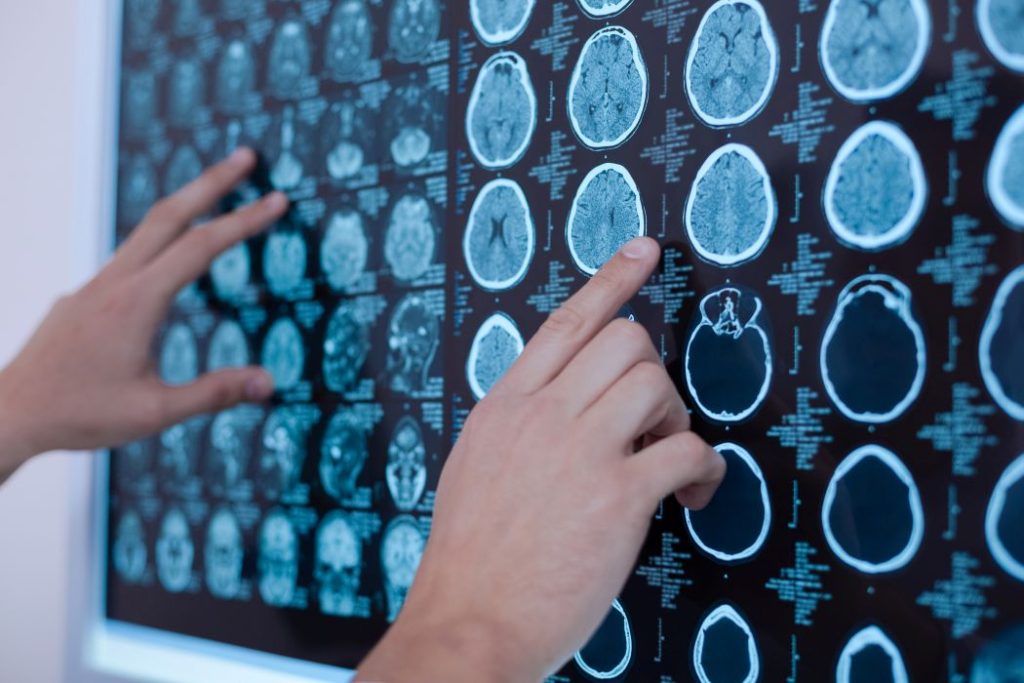20 June 2025
•4 minute read
Brain Tumors in Adolescents and Young Adults
In the midst of life’s busiest and most vibrant years—whether you are diving into a new career, pursuing higher education, or building meaningful relationships—the last thing on your mind is a serious health diagnosis.
For many, the first signs are subtle and can easily be mistaken for stress or the demands of a hectic lifestyle. Young adulthood is typically a time of laying the foundation for the future. Yet, for those diagnosed with a brain tumor, these plans can be abruptly interrupted.
Unveiling the statistics
According to a study by the National Brain Tumor Society conducted in the United States, about 14.3 per cent of all primary brain tumors occur in the adolescent and young adult population. Overall, brain tumors are the second most common cancer in individuals aged 15 to 39 and the second leading cause of cancer-related death in those between 15 and 39 years of age.
The most common primary brain tumors in adolescents and young adults are pituitary tumors, meningiomas, nerve sheath tumors, and gliomas. Gliomas account for 25 per cent of all primary brain tumors in this age group and represent 82 per cent of all malignant tumors within this population.
Key factors behind brain tumors in the young

Researchers have found that female adolescents and young adults have a higher susceptibility to develop certain tumors, such as pituitary adenomas, which are more prevalent in females aged 15 to 39. Conversely, males show a higher incidence of malignant central nervous system tumors.
Currently, little is known about the definitive risk factors for central nervous system tumors. The primary established environmental risk factor is exposure to therapeutic doses of ionizing radiation to the head and neck. For example, this can happen to individuals undergoing radiation therapy for cancers in these areas. Even certain medical professionals, like radiologists or radiation therapists, might be exposed to higher levels of radiation if proper safety measures are not followed.
Additionally, some studies have pinpointed specific genetic factors, syndromes (such as neurofibromatosis, Li-Fraumeni syndrome, tuberous sclerosis, and von Hippel-Lindau disease), and environmental exposures as potential contributors to tumor development. Examples of environmental exposures include prolonged exposure to pesticides, industrial chemicals, or heavy metals.
Untold challenges and telltale signs of brain tumors
According to Consultant Neurosurgeon from Columbia Asia Hospital – Bukit Rimau, Dr. Daniel Rajesh, brain tumors in adolescents and young adults often pose diagnostic challenges due to their diverse presentations. Usually, these tumors are diagnosed late, after a prolonged period of unusual conduct being misattributed to behavioral or psychiatric symptoms, such as frontal lobe syndrome.
“As young adults leave home, they may not prioritize regular healthcare and may hesitate to discuss symptoms. You know how it is—you are busy with work, school, or just enjoying your independence. Regular check-ups might not be on your radar. Plus, alcohol and drug use could also delay diagnosis,” says Dr. Daniel.
“Common symptoms of brain tumors include behavioral changes, persistent or severe headaches, epileptic seizures, focal deficits (such as weakness or sensory loss in specific areas of the body), gait disturbances (problems with talking or balance), and neurocognitive changes, including difficulties with memory, concentration, and other cognitive functions,” Dr. Daniel adds.
Catching brain tumors early

“In adolescents and young adults, who are going through a phase of transition, brain tumors generally have a better prognosis compared to older adults. So, it is important to focus on early detection and survivorship care for these patients. It is about catching it early and providing the right support so they can get back to their lives and dreams.
“For diagnosing brain tumors in young adults, we typically start with a detailed medical history and a thorough neurological exam, including a fundus examination, where we look into the back of the eye to check for any signs of pressure or other issues. We also use various imaging studies like CT scans, MRI, and others such as MRA, MRV, MRS, functional MRI, and angiograms,” Dr. Daniel says.
Brain tumors and endocrine dysfunction

Brain tumors in adolescents and young adults can significantly interfere with pubescent growth and hormone regulation. Dr. Daniel points out that when a brain tumor compresses the pituitary gland, which is responsible for hormone production, it can result in endocrine dysfunction.
The following are endocrine symptoms specific to the type of hormone affected:
Hormone | Excess Symptoms | Deficiency Symptoms |
|---|---|---|
Cortisol Hormone | Weight gain, thinning of legs and arms, diabetes, hypertension, depression, anxiety | Fatigue, hypotension, poor appetite, nausea |
Growth Hormone | Gigantism before puberty; acromegaly features like enlarged hands and feet after puberty | Fatigue, loss of muscle mass |
Prolactin Hormone | Irregular or absent periods in women, breast milk production in women who are not nursing, infertility or erectile dysfunction in men | Typically no symptoms |
Thyroid Hormone | Weight loss, rapid or irregular heartbeat, sweating, irritability | Weight gain, appetite loss, fatigue |
Testosterone/Estrogen | Typically no symptoms | Infertility, loss of body or facial hair in men |
Cutting-edge treatment options
“Typically, we start with surgery to remove as much of the tumor as safely possible, especially for tumors like pilocytic astrocytoma, where complete removal can be curative. If surgery is not an option or if there are remaining tumor cells, we may use radiation therapy to target those cells,” Dr. Daniel shares.
Other than that, chemotherapy is frequently used in combination with radiation therapy and as maintenance therapy, though it is not typically curative on its own. Immunotherapy is an emerging field with promising potential, particularly for challenging tumors like glioblastoma multiforme. Lastly, targeted therapy is being increasingly used for tumors with specific genetic mutations, such as IDH1 mutant tumors.
Potential aftermath of brain tumor treatments
In addition to the common side effects of brain surgery, radiation, and chemotherapy, young adults with brain tumors face specific challenges. These include potential infertility, the need for hormone replacement therapy if the tumor affects the pituitary gland, and a higher risk of developing other cancers later in life.
“Chemotherapy can significantly impact fertility by affecting sperm production in men and depleting ovarian eggs in women. It is so important to think about preserving fertility if you are going through this. Additionally, patients may experience hormonal issues involving the hypothalamus and pituitary gland due to tumor involvement, surgery, or radiotherapy, as well as ovarian exposure during cerebrospinal irradiation,” says Dr. Daniel.
7 TIPS TO REDUCE THE RISK OF BRAIN TUMOR

It is not possible to eliminate all risk factors for brain cancer. However, the Centers for Disease Control and Prevention (CDC) recommend several tips to lower cancer risk, including:
1. Getting regular check-ups.
2. Avoiding or reducing exposure to toxins at work by wearing a mask.
3. Minimizing exposure to ionizing radiation at work by using protective gear.
4. Taking steps to minimize exposure to conditions like HIV.
5. Getting the human papillomavirus vaccine to reduce the risk of cervical cancer.
6. Maintaining regular exercise and eating a nutritious, balanced diet.
7. Avoiding smoking or quitting if currently smoking.
This article first appeared in Parenthood, 12 June 2025.
Share:
Was this article helpful?
20 June 2025
•4 minute read
Brain Tumors in Adolescents and Young Adults
Learn more about Neurosurgery in Columbia Asia
Learn MoreShare:
Was this article helpful?
Health Packages
Elevate your health with tailored health packages at Columbia Asia Hospital. Take charge of your health journey today.
Pink October 2024
From
RM80
HLA Policyholders Promo: Influenza Vaccination
RM65
Find Out MoreAIA Policyholders Self-pay Benefits
Pink October 2025
From
RM80

